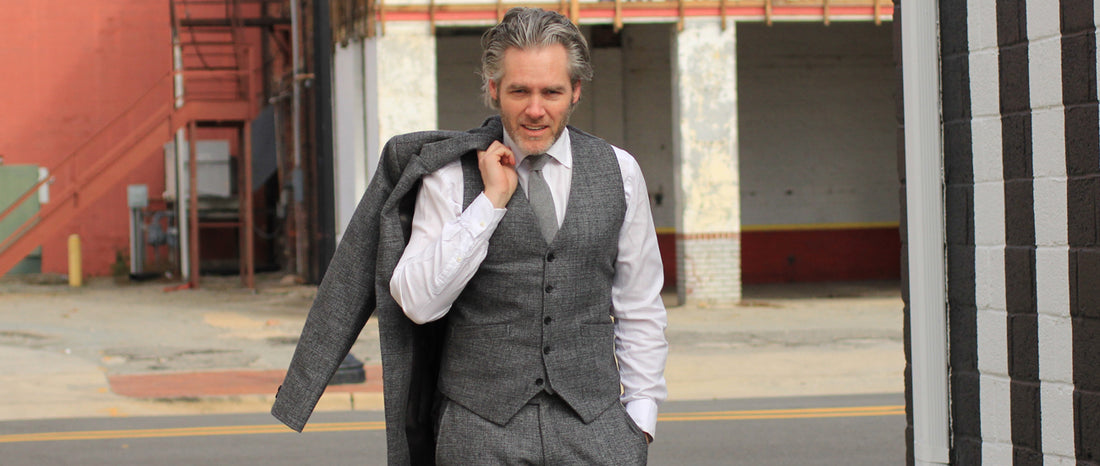A waistcoat is a beneficial addition to a suit outfit. Also known simply as a vest, it's a sleeveless garment that's worn over a button-up dress shirt but underneath a suit jacket. The purpose of a
waistcoat is to introduce new colors and patterns while also providing greater protection against the cold in the process. With so many different types of waistcoats on the market, however, how do you know which one to choose? If you're struggling to choose the perfect waistcoat, consider the following tips. Below, you'll learn several essential features to look for when shopping for a waistcoat.
Choose a Color That Matches Your Trousers
You can find waistcoats available in nearly every color. With that said, it's typically best to choose a waistcoat in the same color as your trousers. If you're wearing black trousers with a light blue dress shirt, for instance, consider wearing a black waistcoat. If you're wearing charcoal-colored trousers, on the other hand, consider wearing a similar charcoal-colored waistcoat. By matching your waistcoat with your trousers, you'll create a more cohesive outfit that flows naturally to create an attractive appearance.
Consider the Material

In addition to the color, you should also consider the material when shopping for a waistcoat. Like suit jackets and trousers, waistcoats are available in a wide variety of materials. While some of these materials have a similar appearance, each one offers unique characteristics that distinguish them from the rest. So, what's the best material for a waistcoat? Linen waistcoats are popular during the spring and summer months because of their lightweight and breathable characteristics. Linen weighs less than cotton, making it ideal for the warmer seasons. A linen waistcoat won't weigh you down as much other materials. As a result, you can wear it throughout the spring and summer months without fear of it causing discomfort. During the fall and winter months, on the other hand, you may want to choose a waistcoat made of a different material, such as wool. Wool, of course, is heavier than linen -- as well as other common materials like cotton -- so it's able to protect your body from the cold weather.
When In Doubt, Choose the Same Material as Your Suit

Seasonal nuances aside, a good rule of thumb to follow when wearing a waistcoat is to choose the same material as your suit. Waistcoats are made of the same materials as suit jackets and trousers. Here's the thing, though: Not all men purchase a waistcoat at the same time when they purchase their trousers and jackets. If you're planning to purchase your waistcoat separately, consider choosing a waistcoat in the same material as your suit jackets and trousers. As previously mentioned, some of the most common materials used in the construction of men's suits include cotton, linen and wool. With that said, you can find waistcoats made of other materials as well, including velvet, tweed and even corduroy. When in doubt, choose a waistcoat in the same material as the suit with which you intend to wear it. Doing so ensures that all your garments flow cohesively with each other to create an attractive and stylish outfit that complements your body.
Look for Pockets
When shopping for a waistcoat, check to see whether it has pockets. Some men assume that only trousers have pockets, but this isn't necessarily true. While most suit trousers do, in fact, have pockets, many waistcoats feature pockets as well. You can typically find pockets on the bottom-front left and right sides of a waistcoat. Other waistcoats feature one or more pockets on the breast area. Regardless, you should look for pockets when shopping for a waistcoat. If a waistcoat has pockets, you can take advantage of them to store and carry small personal items. If a waistcoat doesn't have any pockets, though, you'll have to rely on the pockets of your trousers and suit jacket, which may or may not be sufficient. The bottom line is that pockets are always a useful feature for a waistcoat; you just need to check to see how many pockets a waistcoat has and where they are located.
Get the Right Size
If you're going to wear a waistcoat, you need to make sure it fits your body. You can't expect a waistcoat to enhance your appearance if it doesn't fit. If your waistcoat is too big, it will look baggy and unflattering. If your waistcoat is too small, it may constrict your torso while creating an equally unflattering appearance. How do you know whether a waistcoat fits? Assuming you order your waistcoat from StudioSuits, you can rest assured knowing that it will fit perfectly. Like all suits and accessories sold on our website, we offer custom sizing on waistcoats at no additional charge. When you order a waistcoat from StudioSuits, you'll have the option of providing us with your body measurements. Once we receive these measurements, we'll use them to create a custom-sized waistcoat that fits your body perfectly. You can always test your luck by checking local department stores in your area. An easier and faster solution, however, is to order your waistcoat from StudioSuits. With custom sizing, you can rest assured knowing that your waistcoat will fit perfectly.
Consider Your Necktie or Bow Tie
Most men prefer to accessorize with their waistcoat with a necktie or bow tie, the latter of which is more formal. Whether you choose a necktie or bow tie, though, it needs to match your waistcoat. Your necktie or bow tie doesn't have to necessarily feature the exact same color or pattern as your waistcoat. Rather, it should flow cohesively without clashing. If you're wearing a black waistcoat, for example, avoid wearing a brown, tan or beige necktie or bow tie. Instead, choose a necktie or bow tie in a color that flows cohesively with black.








